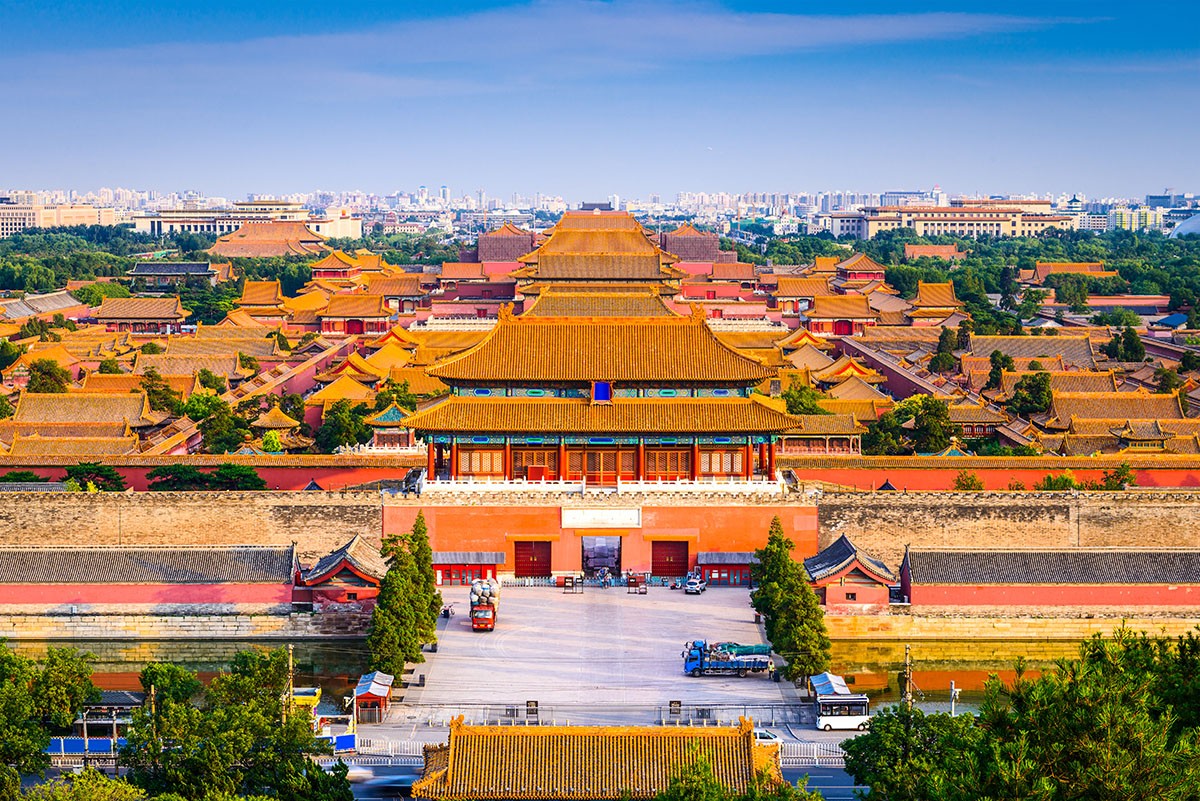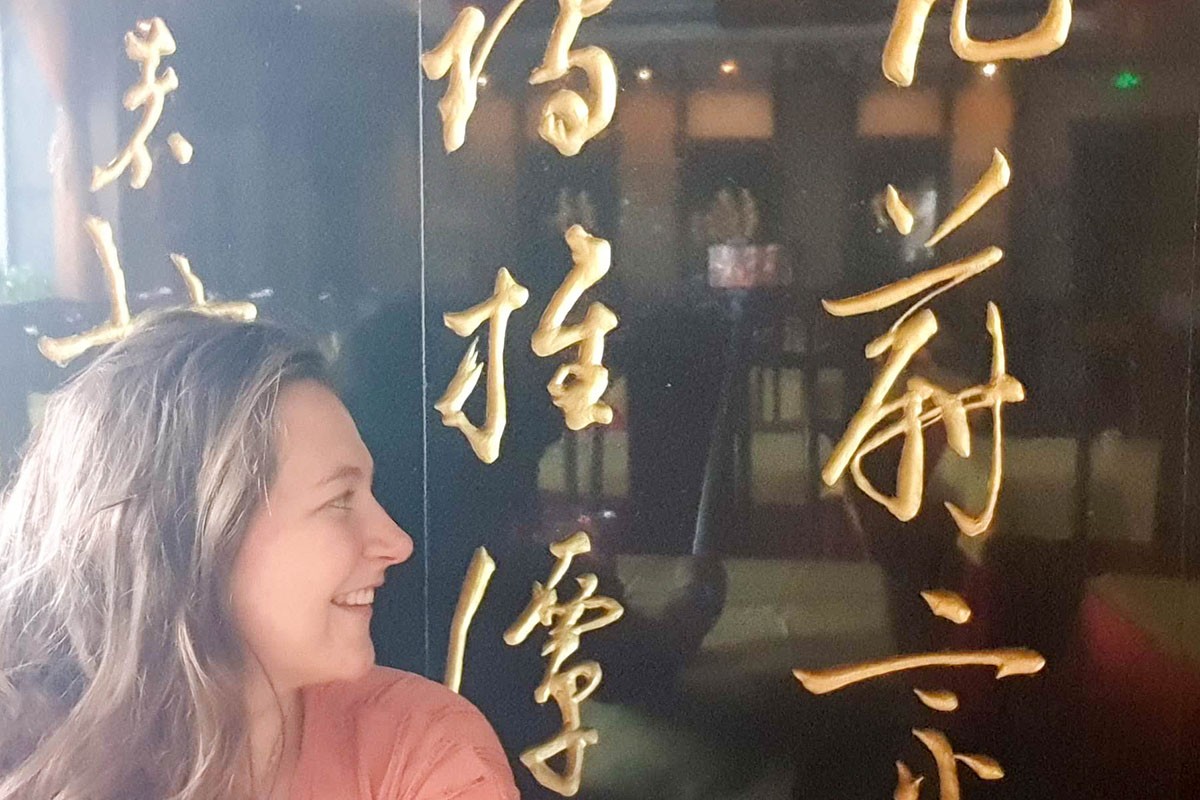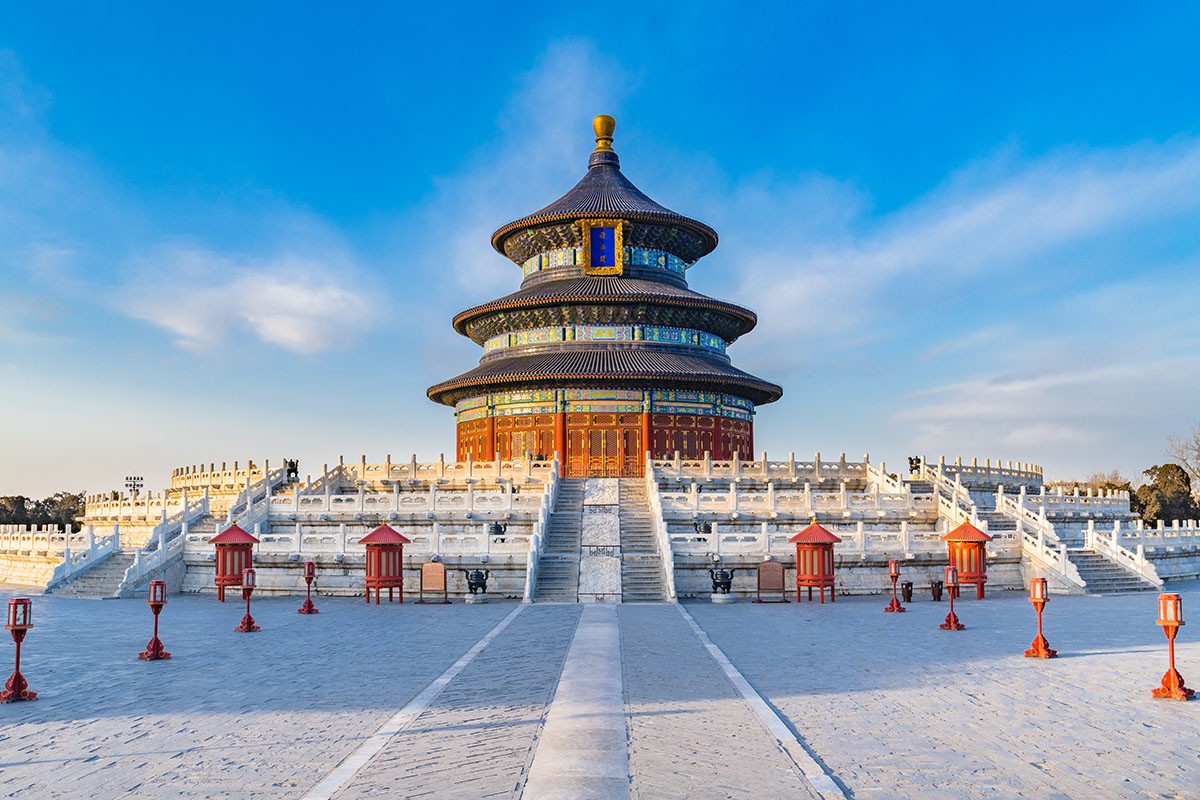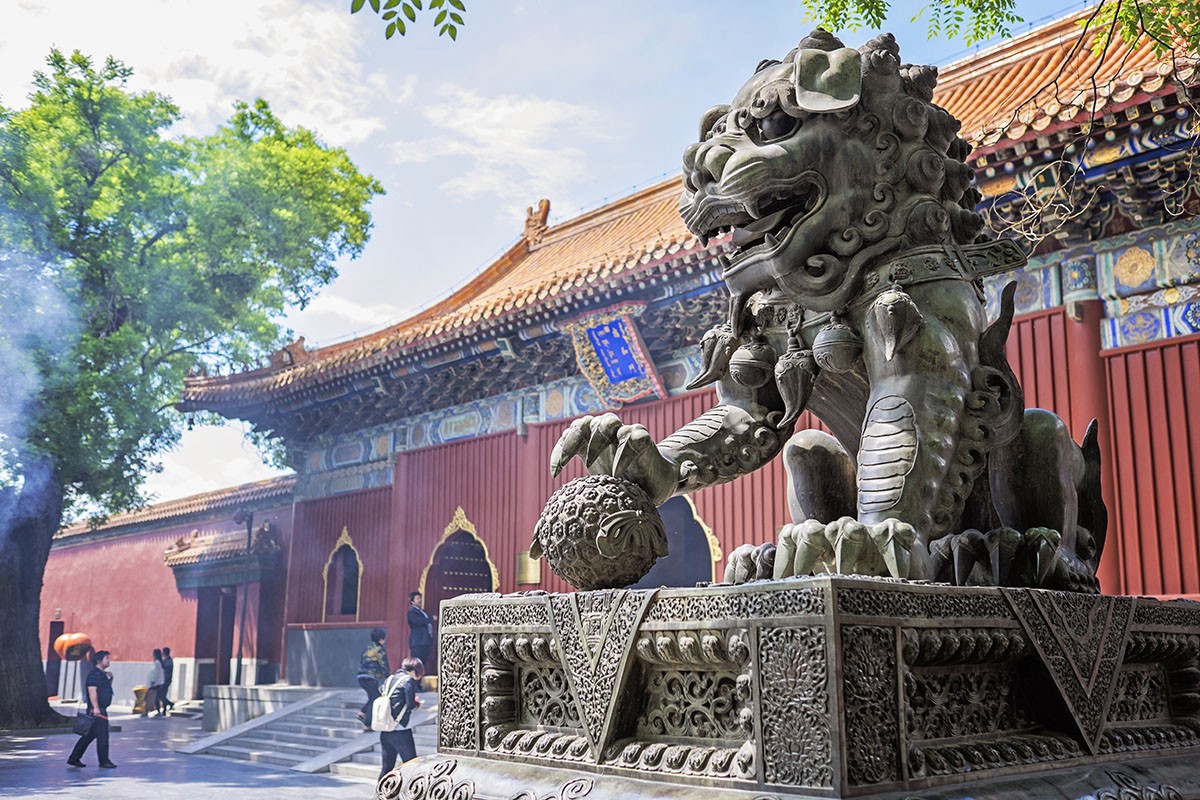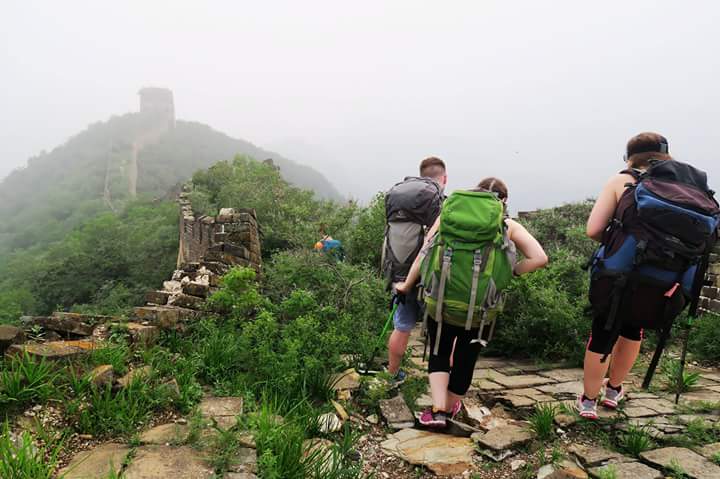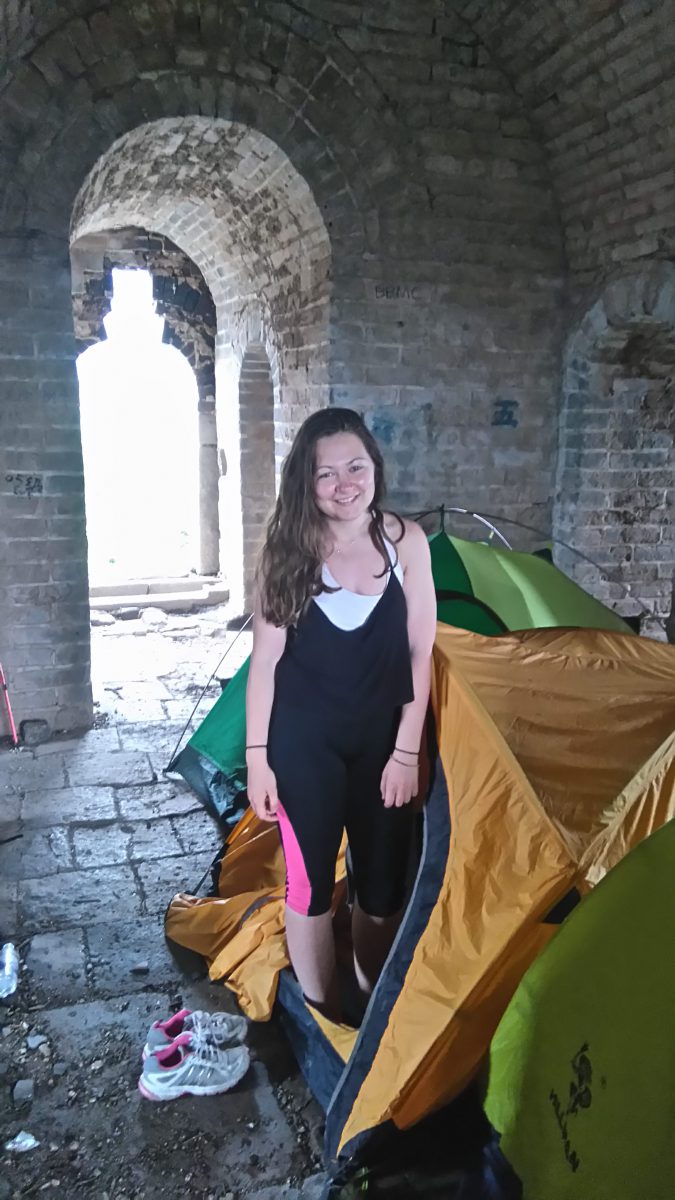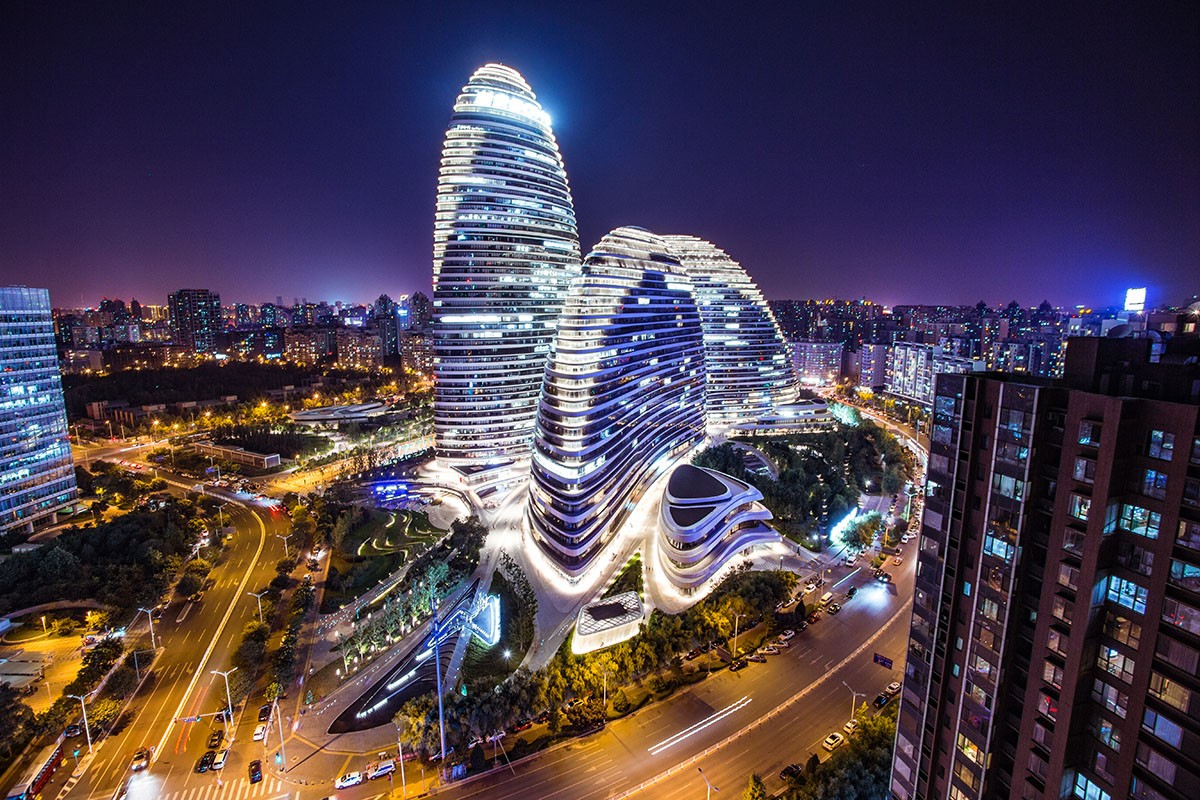The capital of China is like nowhere else in the world. It’s the epicentre of China’s culture and heritage, with a colossal amount of history, but also a vibrant new culture. It’s nowhere near as modern as Shanghai – you visit the two for very different reasons – but it has everything you need for a comfortable city break.
At the same time, it’s incredibly traditional, and while its tourist attractions are very busy, it still sees few Western travellers. You’ll be able to find people who speak English and Western food – it is a huge city and not completely off the beaten track – but it also remains unmistakably unique.
My time in Beijing
The first time I went to Beijing was in July 2016. It was my first proper stop on my ‘big’ backpacking trip, the one that I went on not knowing when or if I’d return (3.5 years later and I’m still going…).
I took the train from the airport and changed to the metro, which was actually pretty straightforward. And then I ascended to ground level at my stop… and I was bewildered.
An enigmatic smog covered the city, with the odd looming neon Mandarin characters. As I walked down the street, every shop seemed to be selling roasted duck (not a vegetarian’s dream) and there was an extraordinary amount of shoe shops. As I turned down one of the hutongs, where my hostel was located, the architecture changed to traditional oriental style, and I noticed a few traditional tea shops. There were people, sounds, sights and smells everywhere. It was a sensory overload.
Now, I’m not going to say Beijing’s my favourite city in the world. I have returned since, and still stand by this. It’s hectic, it’s polluted and it’s all a bit overwhelming. However, if you’re travelling in China, Beijing is essential to start to piece together the country. It has some of the best temples in the country, and here you can experience Chinese culture like nowhere else in the city.
About Beijing
Beijing literally means ‘north capital’ and is one of China’s four ancient cities, along with Xi’an, Nanjing and Luoyang. The city has been around for over 3,000 years, when it was known as the Jin city. It was the capital city of China/ North China from 916 – 1911, when the Qing Dynasty were overthrown in the Xinhai Revolution. Following was a turbulent period where Beijing changed hands many times and was a victim of the Second World War, but when the PRC was founded on October 1st 1949, Beijing was declared capital and has since increased in importance on the world stage.
How long to spend in Beijing
You could spend ages in Beijing and not get bored, there’s a lot to do and some fantastic day trips. On my first trip, I actually spent a whole 8 days in Beijing. However, I’m guessing if you’ve come to China, you want to see more than just the capital (and there’s so much more to offer around the country, I promise!), and you might want to limit your time here.
I’d recommend at least 3 days in Beijing to make the most of the city. I’ve included a Great Wall trip as an extra day in this Beijing itinerary, because it’s not technically Beijing at all, and I would really recommend an overnight camping trip there, but you can swap it out for another day if you’re short on time.
Check out my one month in China itinerary to see how this all comes together with other Chinese cities and points of interest.
How to get to Beijing
Beijing Airport (PEK) is a fantastically connected airport with flights going to most destinations in Asia, lots of places in Europe and Australia, and some in North America. Fairly reasonably priced flights head to Peking Airport from Europe and other Asian destinations.
However, if you’re like me and just love overlanding, you might be more keen on entering Beijing by train or bus. You can take trains from all over China (which are a pretty fun experience!) to one of Beijing’s four stations, and various buses as well.
Internationally, the only country you can realistically get to overland, without a multi-day voyage, is Mongolia. I took a bus from Beijing to the Mongolian border – you can read about it here and watch the video below – or you can also take the Trans Manchurian which goes all the way to Moscow. However, this can be rather expensive – it’s a lot cheaper to just take a train for the Ulaanbaatar/ Zamiin Uud portion of the journey.
From the airport, I recommend taking the Airport Express which connects the airport to Subway lines 2, 10 and 13. It’s fairly easy to navigate – as mentioned, I did so on my first time in Beijing with zero Chinese.
You can also take a taxi from one of the airport ranks to the city for around 120 RMB.
How to get around Beijing
Beijing is big and busy, meaning road travel takes a loooong time and cuts into time you could be seeing the sights and eating. Bearing this in mind, I’d highly recommend taking the metro instead.
The Beijing metro is actually quite easy to use, with ticket machines, announcements and place names in English. All of your stuff needs to be scanned, like at an airport, but it’s all pretty self-explanatory. There are 22 lines, so it’s highly likely that there’s a subway near to where you’re staying!
WiFi in Beijing
WiFi in Beijing ranges from terrible to very passable. However, a VPN is essential for travel in China. I use PandaPow, which you can purchase monthly, but have also used SurfShark.
It’s a bit of a gamble whether your accommodation will have good WiFi or not, but as a general rule, the more modern and upmarket the hotel or hostel is, the better the WiFi will be. Some cafes and restaurants have WiFi, and sometimes it works surprisingly well, but I definitely wouldn’t count on that!
Where to Stay in Beijing
Hostel: Leo’s Hostel is where I have stayed both times I was in Beijing. It’s not the most high-tech or luxury of hostels, but it does have a great atmosphere in its restaurant/ bar, and it’s a great place to meet other travellers. The English-speaking staff are generally helpful, and it is in a great location near Tiananmen Square, set in one of the hutongs. Dorms and private rooms are available. Click here for rates and to reserve your spot.
Budget Hotel: Nostalgia Hotel is quirkily decorated with various vintage memorabilia, and has clean bedrooms with exposed brickwork and other retro features. Free WiFi is available throughout the property and has friendly staff. Click here for rates and to reserve your room.
Mid-Range Hotel: Beijing Heyuan Courtyard Hotel is located close to the Forbidden City, and has luxury rooms with roll-top baths and four-poster beds. On site is a restaurant, and breakfast is included in the rate. Click here for more information and to book your room.
Luxury Hotel: Waldorf Astoria Beijing has deluxe rooms and suites, with gorgeous rooms with plenty of natural light and other luxury features. On site is a pool, bar and restaurant. Click here for rates and to reserve your spot.
Beijing Itinerary Day 1
Mao’s Mausoleum – Tiananmen Square – Forbidden City – Jingshan Park – Museum of China – Craft Breweries
If you’re up bright and early on your first day in Beijing, you might want to head to Mao’s Mausoleum. This is probably one of Beijing’s most controversial attractions, as it’s pretty much a shrine to the country’s most ruthless dictator.
However, lots of Chinese people love visiting the mausoleum, and there are many people offering flowers to his embalmed corpse and other niceties. It is definitely an interesting place to spend an early morning in the capital. It’s open from 7am – 11am, but I’d get there by 6:30am latest to avoid queuing (and you’ll still probably have to queue, but that’s a Chinese pastime anyway.
It’s also in Tiananmen Square, so you can spend some time looking around the square afterward. It’s basically a huge, open square, and while it isn’t the largest in China, it’s certainly the most famous.
Look out for sights like Tiananmen Tower, which was built in the Ming Dynasty and was the front door of the forbidden city, the centrally located Monument to the People’s Heroes and the Great Hall of the People which is the site of China’s National Congress Meetings.
Next up, head through the square to the Forbidden City. This area was occupied by the court and was forbidden for most people to access, hence the name. Nowadays, it’s open to all – just remember that you need your passport to purchase a ticket.
After the Forbidden City, you can enter Jingshan Hill Park and climb the hill itself, to see a panoramic view of the Forbidden City and Square. That’s if it isn’t ridiculously smoggy, that is – some days you won’t be able to see a thing!
The National Museum of China is next on the list – you need to visit this spot before 4:30pm, when it closes, but it is right by Tiananmen Square. It has a few interesting exhibits about Chinese history and culture.
I can bet you’re very hungry by now, so head to one of the many restaurants nearby the square that serves up delicious Chinese fare, including noodles and dumplings.
If you’ve still got energy in the evening, I’d recommend heading to one of Beijing’s craft breweries. Chinese beer isn’t exactly great, even though many of the brands are rated amongst the most popular beers in the world. You’ll find some much nicer beverages at Beijing’s craft breweries – check out this list to find one near your accommodation.
Beijing Itinerary Day 2
Summer Palace – Temple of Heaven – Beijing Opera
After Tiananmen Square, one of the best Beijing attractions is the Summer Palace. It was first built in 1750, but was burnt by the pesky Brits and French in the 1869 rampages of the Anglo-French alliance force. It was eventually restored in its original place in 1886. The complex houses pagodas and various oriental buildings, as well as classic Chinese landscaped gardens. The closest metro stations are Beigongmen or Bagou.
For lunch, I’d recommend just grabbing something at one of the restaurants near the Summer Palace.
Next up, the Temple of Heaven is one of my favourite spots in the city and a definite must on any Beijing itinerary. The Temple of Heaven was built between 1406 to 1420 under Emperor Yongle. It was built to worship the gods of the heavens throughout the Ming and Qing dynasties, hence the name.
You’ll need to travel a bit to reach the Temple of Heaven – it’s the other side of the city – the closest metro station is Tiantan Dongmen Station.
Both of these spots are big and quite intensive, with a lot of walking around. After the Temple of Heaven, return to your accommodation and rest up – but if you can make it out later on, I’d recommend heading to the Beijing Opera.
The Beijing Opera is the largest Chinese opera form, and has been around for nearly 200 years. It encompasses singing, dancing, dialogue and martial art, so it’s unlike any opera you’ve seen before! You can purchase Peking Opera tickets here.
Beijing Itinerary Day 3
Silk Market – Lama Temple – Hutongs- Art District
On day 3 in Beijing, I’d recommend heading to the famous Silk Market first. While it is called the Silk Market, it’s far from just silk being sold here – you’ll also find Jade products, electrical appliances and nail salons, amongst many other things. Even if you’re not there to shop, it’s a great place to enjoy Chinese culture and meet some locals.
From the Silk Market, catch some zen at the Lama Temple. I know, another temple – but this one is actually my favourite in Beijing. It’s a lot less crowded than the main temples in the capital, and the architecture really is beautiful.
After the Lama Temple, there’s a great nearby Tibetan Vegetarian Restaurant called King’s Joy that does a tasty meat-free lunch. Otherwise, you could get some street food in the hutongs – your next stop on your Beijing itinerary!
Nanluoguxiang is one of the most famous and popular hutongs in the city and it’s conveniently located close to the Lama Temple.
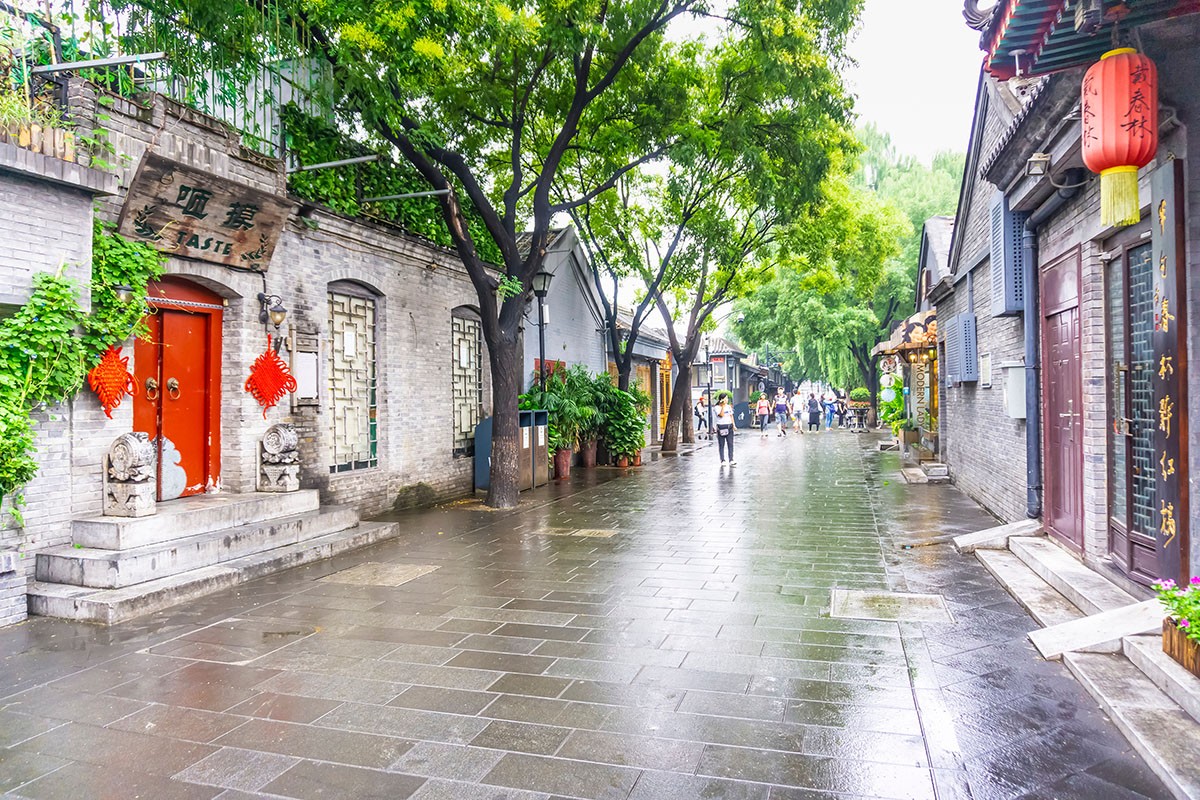
It’s got one of the best courtyards in the city, as well as old-world charm with plenty of tea shops and eateries. The best thing to do here is to just visit and stroll about, embracing the atmosphere.
Next up is the 798 Art District. Located a little out of town, it’s worth making the trip to check out this unique area of the city.

Built by the East Germans in the 1950s, it became the capital’s art centre in the 1990s. There are various art galleries, as well as outdoor spaces dedicated to art here, and some of Beijing’s most hipster pubs – a great place to cheers to your time in Beijing!
When to see the Great Wall
Even though it’s a three hour drive from Beijing, the only way you can go to the capital and not see the Great Wall is if you’ve already seen it somewhere else in China. That being said, I haven’t included this in this Beijing itinerary, because there are a few different ways you can do it.
You can easily organise a day trip to different parts of the wall. Definitely choose one that goes to one of the quieter places, like Jinshalang – if you’re going to go to Mutinayu or Badaling (the most touristy places by far) you may as well go by public transport. You can click here for a tour to Juyongguan, one of the quieter areas.
The other option is to go to Muntinayu or Badaling. As mentioned, these are touristy – super touristy. However, going there will be cheap and it’s an adventure getting there without a tour!
The third option, which is what I did, is to camp on the Great Wall. You can do a tour with China Hiking, who do trekking and camping tours to Jiankou, a very non-touristy, non restored section of the Great Wall. We actually were the only group on the wall.
You can also do fun things like take a helicopter ride over the Great Wall of China – click here for more information!
Extra Things to do in Beijing
- Meet Peking Man at the site where China’s ancient fossils were found, indicating civilization near Beijing in ancient times.
- See the futuristic Olympic Park which is where the olympics were hosted in 2018
- Enjoy more of Beijing’s modern architecture like the CCTV building and Wanjing Soho (pictured)
- Enjoy the Beijing World Park where you can explore miniatures of tourist attractions from all over the world.
- See an abandoned theme park at China’s Wonderland.
- See North Korean propaganda art at Mansudae Art Studio Gallery.
- Go up the Dragon Escalator – the world’s largest outdoor escalator – and see Longqing Gorge on a great day trip from Beijing.
- Explore the ancient history of Beijing at Beijing Capital Museum.
- See the ancient Ming Tombs, located a little way out of the city.
Beijing Essentials
- Water to Go Bottle so you can drink the tap water!
- Immodium – Beijing belly is real.
- Chinese phrasebook this will help you speak to the locals.
- Lonely Planet China to guide you around.
- Universal adaptor
- Power bank to keep your devices charged when you’re out all day!
- See my list on what to pack for China for more ideas.
Health and Safety in Beijing
Beijing is, in general, a very safe city. Violent crime is incredibly rare, as it is generally in China. I’ve always said to people when solo travelling in China that there’s always a chance I’ll get lost and end up somewhere completely random at 3am, because I often don’t have a clue what’s going on, but I’ll never feel unsafe. China is just a ridiculously safe country.
There are, however, a few scams to be aware of. Avoid rickshaws, which are commonly associated with scams and inflated fares. If someone offers to take you to tea houses, this may well be a scam. There are also a lot of people selling things, with prices often increasing dramatically when you show interest. Saying a firm ‘buyao‘ (don’t want) will help to deter this.
That being said, many Chinese people are curious about foreigners – some may be visiting Beijing for the first time and had little foreign interaction before. The majority of Chinese people are not scam artists, and asking for photos is very common throughout the country.
You can’t drink the tap water in Beijing unless you bring your own water filtration device. Routine vaccinations are recommended. Some hospitals have dedicated sections for foreigners with English-speaking doctors – click here for a list.
Where to go from Beijing
From Beijing, you can head to anywhere else in the country. Bullet trains connect to Shanghai in 5 hours and Xi’an in 4.5 hours. You can even reach the south of the country in as little as 11 hours.
But the slower sleeper trains in China are a great experience too and I’d definitely recommend a few of these while on a China trip. You can head to most of the major cities by train from China – check out the top 20 places to visit in China to start planning your trip!
Overland, you could head north to Mongolia and Russia; if you wanted to visit any other of China’s neighbouring countries, you’ll probably want to visit other Chinese cities first.
Or from Beijing airport, you can fly to many destinations around the world.
Your Ultimate 3 Days in Beijing Itinerary
I hope that this Beijing itinerary has helped you work out what to do in Beijing in 3 days and has given you some inspiration when planning a trip to China! Let me know if you have any questions!

